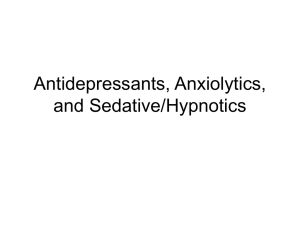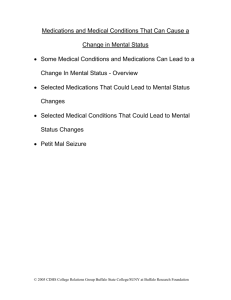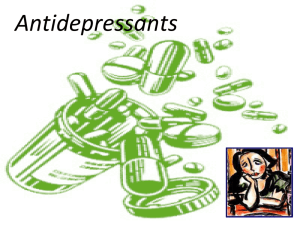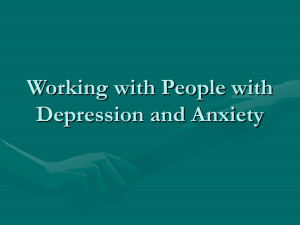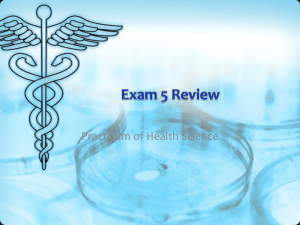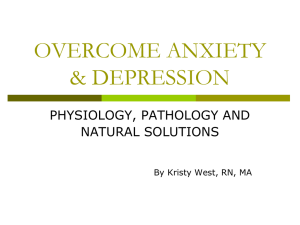Module 6 - EndLink-Resource for End of Life Care Education
advertisement
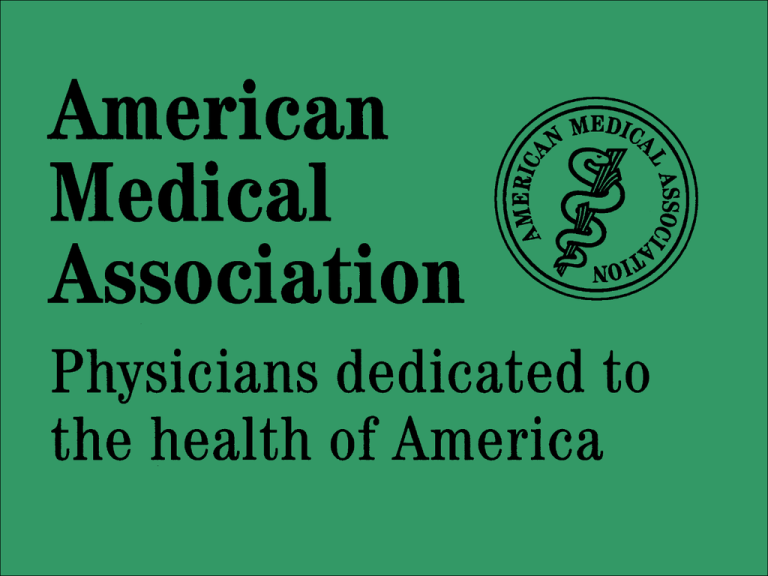
E P E C The Project to Educate Physicians on End-of-life Care Supported by the American Medical Association and the Robert Wood Johnson Foundation Module 6 Depression, Anxiety, Delirium Objectives Identify depression, anxiety, delirium near end of life Describe management plans Depression, anxiety, delirium Highly prevalent, under-diagnosed May prevent quality dying Effective management is possible Depression 25%–77% of patients Intense suffering Not inevitable Treatable in most cases Early treatment is better Risk factors . . . Pain, other symptoms Progressive physical impairment Advanced disease Medications steroids benzodiazepines . . . Risk factors Particular diseases pancreatic cancer stroke Spiritual pain Preexisting risk factors prior Hx, family Hx, social stress suicide attempts, substance use Diagnosing depression in advanced illness Somatic symptoms always present Look for psychological, cognitive symptoms pain not responding as expected sad mood / flat affect, anxious, irritable worthlessness, hopelessness, helplessness, guilt, despair anhedonia, lost self-esteem Suicide Assess all depressed patients for risk Discussion of thoughts of suicide may reduce the risk Suicidal thoughts a sign of depression High risk if recurrent thoughts, plans Management of depression Psychotherapeutic interventions cognitive approaches behavioral interventions Medications Combination of psychotherapy, medication Counseling goals . . . Weave counseling into routine interventions include family when possible Improve patient understanding Create a different perspective Identify strengths, coping strategies . . . Counseling goals Reestablish self-worth New coping strategies Educate about modifiable factors Pharmacologic management . . . Psychostimulants SSRIs Tricyclic and atypical antidepressants . . . Pharmacologic management Choose by time to effect days – psychostimulants weeks / months – SSRIs, tricyclic / atypical antidepressants Start dosing low, titrate slowly Consider consultation Psychostimulants . . . Rapid effect Methylphenidate, 5 mg q am + q noon, titrate to effect Alone or in combination Continue indefinitely . . . Psychostimulants Diminish opioid sedation Not usually an appetite suppressant May exacerbate tremulousness anxiety anorexia insomnia SSRIs Latency 2–4 weeks Highly effective (70%) Well tolerated Once-daily dosing Low doses may be effective in advanced illness Tricyclic antidepressants Not recommended as first-line therapy Latency 3–6 weeks Adverse effects are common nortriptyline, desipramine have fewer adverse effects Atypical antidepressants still being studied Anxiety . . . Fear, uncertainty about future Physical, psychological, social, spiritual, practical issues Presentation agitation, insomnia, restlessness, sweating, tachycardia, hyperventilation, panic disorder, worry, tension . . . Anxiety Assessment complex Differentiate from delirium, depression bipolar disorder medication effects insomnia alcohol, caffeine Management of anxiety Counseling, supportive therapy Benzodiazepines short vs long half-life diazepam lorazepam alprazolam, oxazepam Atypical antidepressants Delirium Global change in cognition, awareness, acute onset Presentation fluctuating level of consciousness cognitive impairment distinguish from dementia, depression, anxiety Causes to consider . . . Infections, sepsis Medications, street drugs (including withdrawal) Hypoxemia Metabolic . . . Causes to consider Vitamin deficiencies Fecal impaction, urinary retention Renal, hepatic failure Tumor burden, secretions Changes in environment Medical management Neuroleptics haloperidol chlorpromazine Atypical neuroleptics risperidone olanzepine Benzodiazepines for acute agitation Terminal delirium Day-night reversal Agitation, restlessness Moaning, groaning Evaluate treatment Monitor carefully If negligible or partial response reevaluate diagnosis inquire about adherence to medication consider dosage adjustment consider a different medication refer to a specialist E P E C Depression, Anxiety, Delirium Summary

